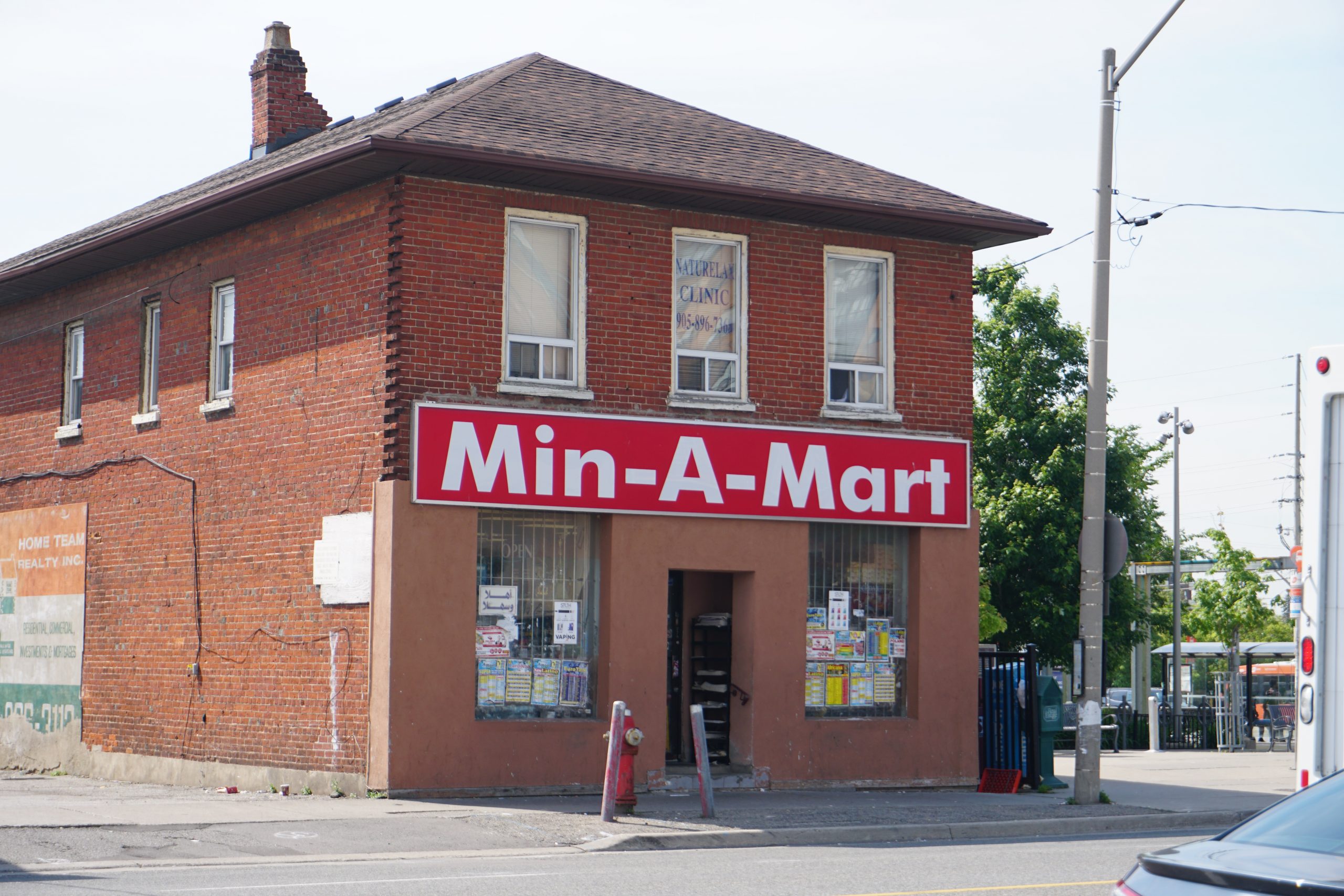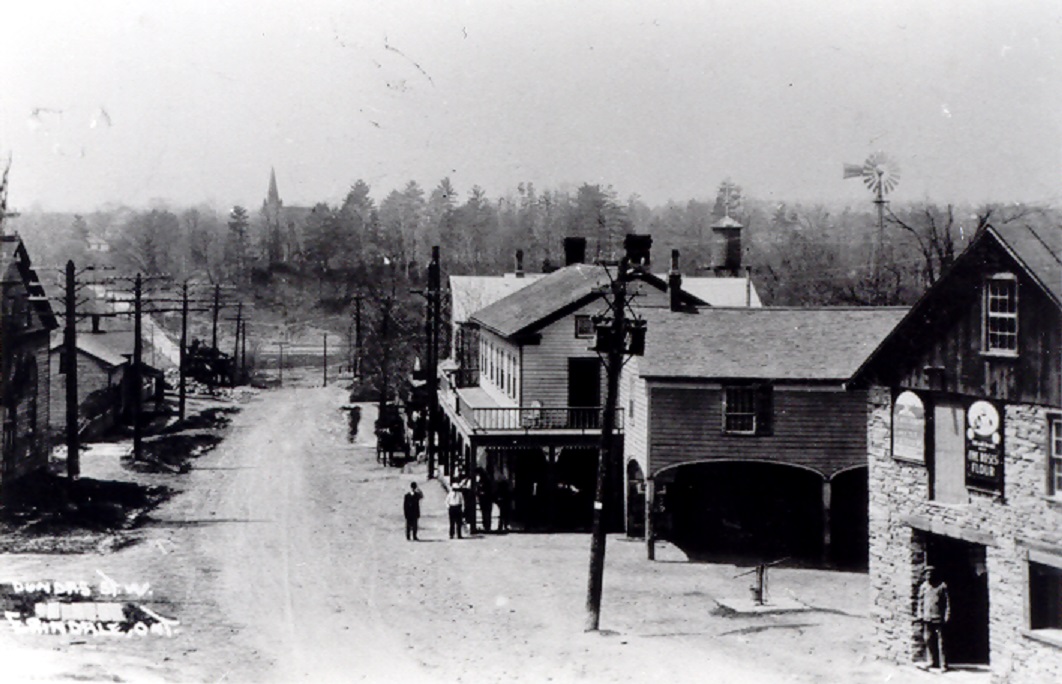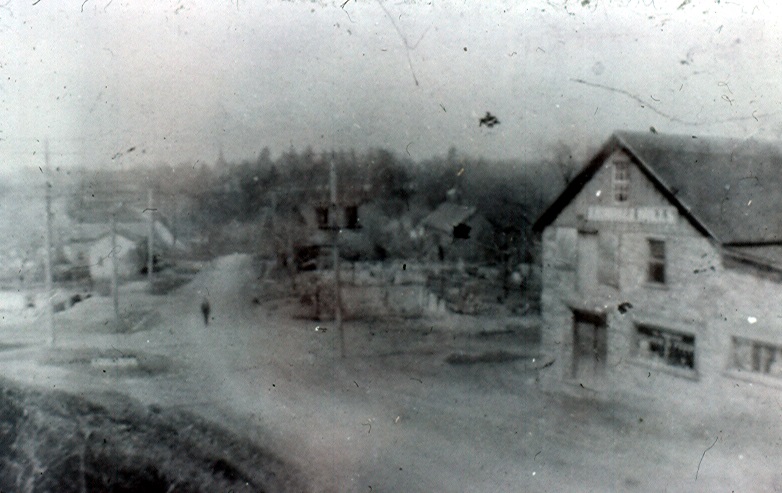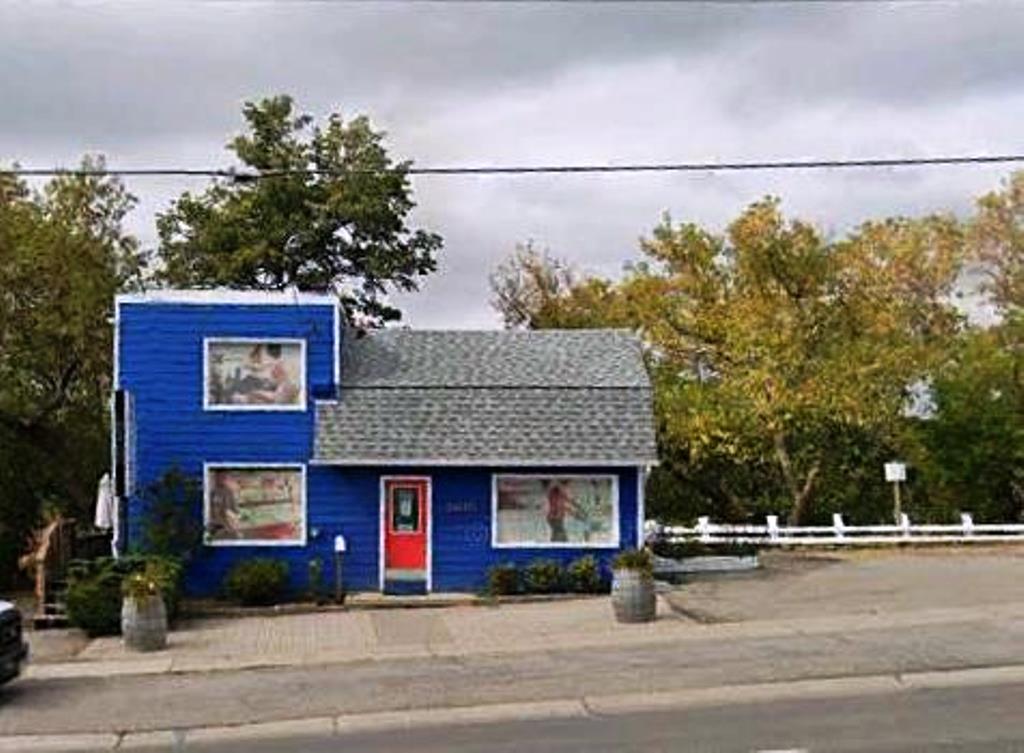Historically fires were an ever-present threat, and historic Mississauga was struck by many, as were a large number of other communities.
Wooden buildings, open fires, and a lack of firefighting capabilities often left communities vulnerable.
But two fires in particular shaped the landscape of this place, and both happened in May.
The first happened 169 years ago today, on May 26, 1852.
It had been a hot and dry spring. Exceedingly dry. There are references to a drought.
That afternoon, a stray spark from a forge ignited a small fire inside John Belcher’s blacksmith shop on the north side of Dundas Street, just to the west of Hurontario Street.
The fire quickly grew and spread, and soon the blacksmith shop and Peter Romain’s general store next door were ablaze.
Everything was tinderbox dry, a strong wind was blowing, and the fire spread quickly, devouring everything in its path: houses, barns, hotels, fences, wooden sidewalks, the saw mill and its dam.
The fire raged for more than two hours, when a tremendous rain storm finally doused the flames.
In all, some 39 buildings, including houses, barns, Teeter’s hotel, a tannery, two blacksmith shops, tavern, Guthrie’s wagon shop, Morley’s Post Office and General Store, Romain’s store, Galbraith’s shoemaker’s shop, and more, all were lost to fire.
Newspaper headlines read: “The village of Cooksville Destroyed!” and “A Whole Village in Ruins!”

The village of Cooksville would, over time, rebound and rebuild, but there is nothing that remains today that predates the 1852 fire.
The oldest surviving building in Cooksville was built in 1852, following the fire, replacing one of the lost general stores.

Built by Peter Romain and Jacob Cook, and later operated by the McClelland, Scott and Copeland families, the General Store was originally located at the southeast corner of Dundas Street and Hurontario Street.
In 1927 the building was moved 80 feet to the east, and remains a commercial building today, and a silent reminder of the community that was forced to rebuild following a devastating fire.
The second May-day fire that scarred our historic landscape happened 102 years ago. May 5, 1919 was a warm day, and there was a strong wind blowing out of the northwest.

According to newspaper reports, a customer, possibly John Wilson, walked into J.M. Barker’s General Store in Erindale and purchased a cigar and matches.

A match was lit, the cigar was lighted, and the match was blown out and discarded in a garbage bucket. At least that was the intent. The bucket, however, held coal oil, and the match was still burning.
J.M. Barker’s General Store on Dundas Street was a grocery store, hardware store, and post office. In addition to being the village Postmaster, John Barker was also a notary, justice of the peace, and issuer of marriage licenses.
He was also the local coal oil and kerosene retailer. The bucket of coal oil immediately ignited, and the fire quickly spread to the wooden floor boards.
Sparks rained down through the floor boards into the basement of the store where barrels of coal oil and kerosene were kept.
Alarm calls almost immediately went out to Brampton, Cooksville, Port Credit, Streetsville and Toronto, and Erindale residents formed a bucket brigade in a valiant but futile attempt to extinguish the growing inferno.
Within minutes it was clear that the old Erindale General Store was lost.
The fire quickly spread, consuming the store and its stock of goods, the post office, and the adjoining Barker family home.
The fire then spread to the east and despite valiant efforts, the 100-year old Royal Exchange Hotel caught fire.
Proprietors George Merridew and his wife were able to get out in time and some of the furnishings were removed, but little could be done to save the old wooden building.
Soon, the adjacent livery stables were also lost, as were, reportedly, two horses and two wagons.

Within 25 minutes of the alarm being raised, volunteer fire fighters from Cooksville and Port Credit had arrived to lend assistance (Toronto apparently refused to send aid).
They succeeded in stopping the fire from spreading further east, and saved Ward’s Mill (Ward’s Mill, later owned by Cyrus Brown, burned itself in 1923).
Fanned by high winds the fire leapt across Dundas Street, igniting the old Parish or Town Hall.
Built around 1839 by the Magrath family, the building had served as a hotel and store, before being donated to St. Peter’s Anglican Church for use as a Parish Hall.
In the early 1890s the old building had been remodeled as the Town Hall, and a small bell tower had been added. As the building burned, witnesses recalled the bell tolling sadly.
Nearby, Burke’s Implement Shop also caught fire several times, but firefighting efforts eventually extinguished the fires and saved the building.
Four hours after the blaze began, the fire was out, but Erindale would never be the same.
The historic commercial core was gone, including Barker’s General Store, Post Office and House, the famed Royal Exchange Hotel, including its stables, the Town Hall, two outbuildings, and Taylor Statten’s barn.
The Barker General Store was replaced in 1921, and the building survives today as O’Neill’s Vacuum Centre on Dundas Street.

The Town Hall was replaced in 1928 by the surviving Erindale Community Hall, which was built on the same site.
Thankfully, with both the Cooksville fire of 1852 and the Erindale fire of 1919, there was no loss of life. However the face and fortune of both villages was forever changed on those days in May.
*A version of this article can also be found in Modern Mississauga:
https://www.modernmississauga.com/main/2021/5/26/may-days-remembering-mississaugas-two-great-fires



Comments are closed.